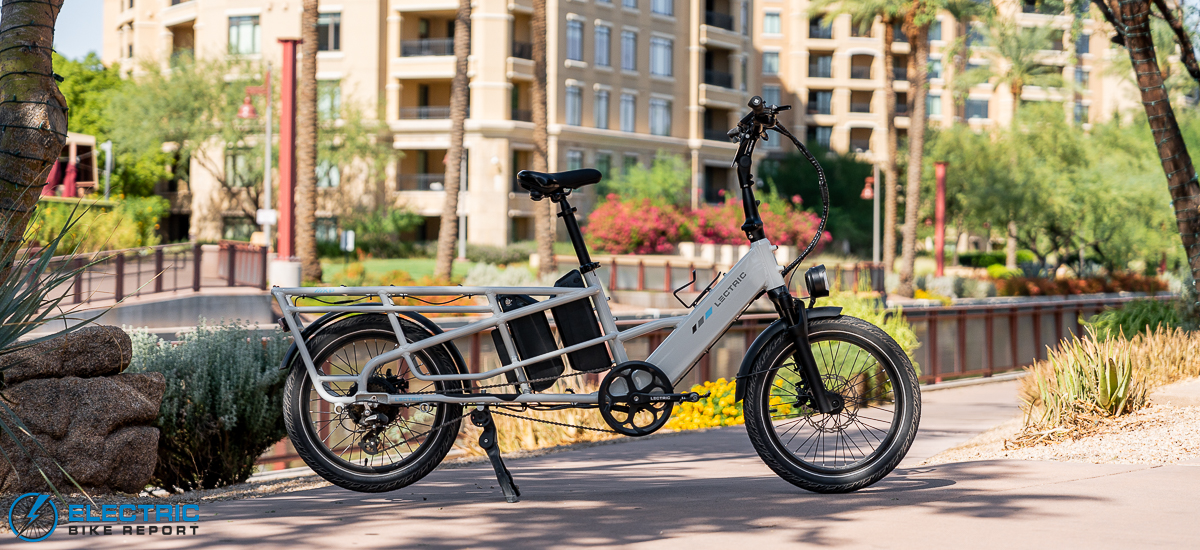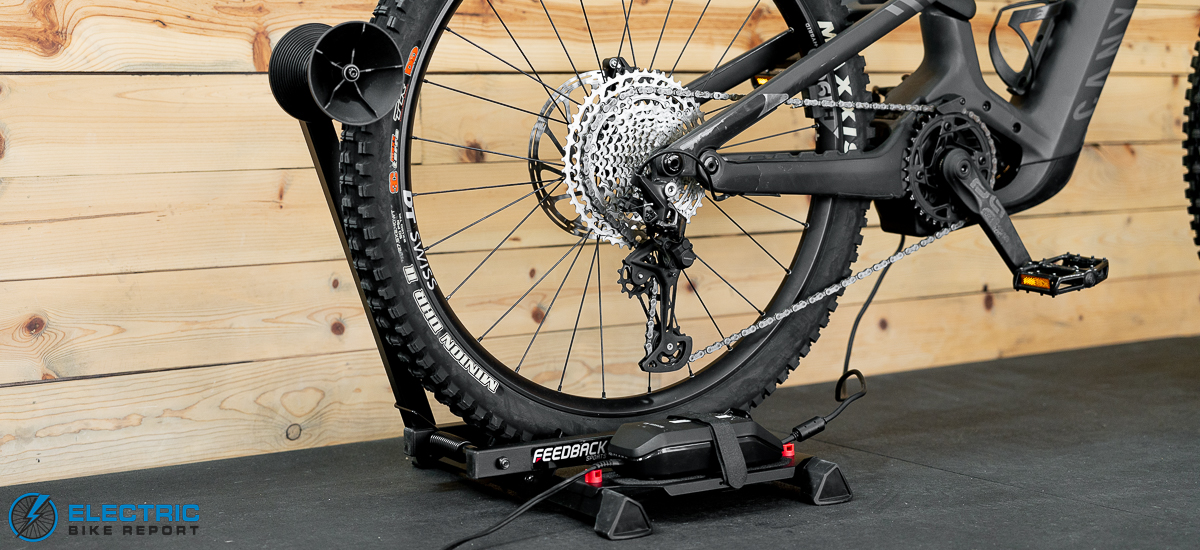
The range of an electric bike is how far you can ride it on one charge. A common problem is figuring out how to assess electric bike range. All electric bikes are advertised as having a particular range. However, these advertised ranges are often inaccurate. In fact, sometimes they are downright exaggerated, and may even be four times higher than the reality. Here is a guide to help you figure out the true range of an electric bike.
Factors to Consider that Impact E-Bike Range
If you think about it, it is impossible for electric bike range claims to be totally accurate. There are too many factors that make the range different from person to person. These factors include:
- how much the rider weighs (you will get longer range if you weigh 100 pounds than if you weigh 400 pounds);
- what level of assistance the rider chooses;
- the terrain they’re cycling over (you will get less range in the French Alps than you will get in the Sahara Desert);
- the amount of luggage they’re carrying;
- how fast they go (1/3 faster = 1/2 the range);
- how hard they’re pedaling;
- how many times they stop and start (hill starts in particular will drain power);
- wind conditions;
- temperature (they will get about 15% more range from a battery on a warm sunny day than they would in winter);
- tire pressure (as with regular bikes, soft tires = less efficiency = less distance for power expended);
- what kind of battery they’re using;
- how old their battery is (batteries lose power over time);
- size of their bike motor (big motors are fun, but obviously they drain more battery power); and
- how fast they’re going.
For example, if you decide to engage no assistance at all because you’re on flat terrain and you’re feeling strong, your electric bike range is as far as you can go before you collapse. For some people this might be 200 miles, and for others it could be 20. On the other hand, if you engage the highest level of assistance constantly, and are in very hilly terrain, you can eat through your battery charge pretty fast.
And if for example you have a lithium battery, you’re going to keep going a lot longer than if you have a nickel-cadmium battery, as lithium batteries have a higher energy density. See my post on how to choose the right battery type for your electric bike.
Related Post: All Garmin Edge Bike Computers Compared, with Comparison Chart and Videos
Battery Power vs. Motor Power
Bear in mind that your battery size and your electric bike motor have to be well matched in order to get optimal range. As a general rule of thumb, look for a setup in which the battery capacity in watt hrs is equal to the motor capacity in watts. This kind of setup will have the greatest range because the motor will not over-tax the battery. You should be able to get at least one hour at maximum assist with this kind of setup.

As an example, the top-of-the-range BionX PL 350 HT DT L had a battery with 355 Watt hrs (36 V/9.6 amp hrs). So the motor capacity and battery capacity in watt hrs were almost identical, and the battery was advertised as having an impressive range of 56 miles (90 km). However, the reality is that you would not be able to travel 56 miles in one hour on most electric bikes (unless you were coming down Mt. Everest).
Bear in mind that many electric bike motors are capped at 20 miles (32 km) per hour. So that 56 miles would be achieved more likely in about three hours, and definitely not using the full assist the whole time – there would be a whole lot of pedaling going on as well!
Battery Capacity is the Most Important Factor
Most people will want to have the most powerful bike motor they can afford. But in fact, motor power only impacts how fast you can pull off, and how well you can get up hills. It does not necessarily impact how far you can go. The most important variable to look at in terms of electric bike range is battery capacity.
The size of the battery is directly analogous to the size of a car’s gas tank.
Battery capacity is usually measured in Watt-hrs. Watt-hrs = amp-hrs x volts (that is, power is equivalent to how long the current will be applied to the battery’s potential, multiplied by the amount of potential power the battery has).
Watt Hrs vs. Amp Hrs
Note: when you are looking at adverts for electric bikes, you may find some where battery capacity is simply stated in amp-hrs. This is insufficient, as it does not include the voltage, so it does not reflect the true energy capacity. So if a bike is advertised with a 36 volt battery, with a capacity of 9 amp hrs, then the true capacity of the battery is 9 x 36, that is, 324 watt hrs (written as 324 Wh).
Watt hrs are important, because watt hrs determine the range of your bike, that is, how far you can go.
For example:
- Bike A has a 24 Volts and 20 AH battery = 480 watt hours.
- Bike B has a 48 Volts and 10 AH battery = 480 watt hours.
- Bike C has a 24 Volts and 6 AH battery = 144 watt hours.
Bikes A and B have a similar amount of energy. If Bike A and Bike B have equal motors and riders, they will perform in a very similar fashion. The bike with the higher voltage battery will accelerate faster and climb better – but that will be at the expense of some of that energy. On the other hand, Bike C will not take you nearly as far.
Bearing all of the above in mind will help you to evaluate manufacturers’ advertisements and claims for their batteries. In general, you want a battery with a minimum of 200 watt-hrs.
Do Your Due Diligence
As a starting point, it’s safe to assume that the range is lower than what the manufacturer says it is. Advertised ranges are based on laboratory conditions, and you are not going to be cycling in a laboratory. Moreover, the manufacturer has a lot of latitude to make up whatever range they like, as there is no International Standard for calculating electric bike ranges, such as exists in the USA for calculating EPA (Environmental Protection Agency) car mileage ratings.
And even real world car mileages don’t match up to the EPA ratings, even though they are stringently controlled. This is because there are so many variables around the way real people drive real cars in the real world that it’s ridiculous to think we could achieve a completely accurate rating of expected miles per gallon.
And when it comes to electric bikes there is NO standard to control manufacturers, so it’s pretty much still the Wild West when it comes to range claims.
So all you can do is find out as much as possible. If you are buying from a reputable, knowledgeable electric bike dealer (and you really should be), ask the dealer how the range was calculated, and under what conditions it was calculated (such as what level of assistance was used, and how much the rider was pedaling). You can also ask the dealer if they have tested the bike themselves and managed to achieve the advertised range.
Crank Drive Motors vs. Hub Drive Motors
Also consider the issue of range with regard to the type of motor you are buying (you can read all about the different types of motors for electric bikes here). For example, there is a good argument that crank drive motors get a better range than hub drive motors because they work synergistically with the gears. Read all about crank drive motors vs hub drive motors here.

How Weight Impacts Electric Bike Range
You should also think about your own weight. Are you particularly heavy, or very light? The bike may weigh 40 to 60 pounds, but you are sure to weigh a lot more than that. So your own weight is the most important weight variable. If you are extremely light or extremely heavy, this is going to make a difference to the range.

It is interesting that bike manufacturers battle to shave a pound or two off the weight of a bike, when in fact most human beings can afford to lose between 5 and 50 pounds – which could make a significant difference to range. On the other hand, a pound or two shaved off the bike will make no noticeable difference to range.
And if you plan to be carrying heavy baggage, or towing a child in a trailer, then of course your needs will be even greater.

Terrain Also Impacts Range
Will your bike commute include major hills? If so, you will use up a lot of battery power quite quickly, so you need to be looking for a bike that claims to have a very long range.

Ask Google about E-Bike Range
It is likely to be very helpful to spend some time Googling the bike you have in mind, and see what real world users have to say. If it is a popular bike, you may be able to find tons of information on line. There may even be a forum where you can ask other cyclists their opinion. If someone out there already owns the bike you are thinking about, they probably have a mind of useful information that they may be willing to share with you.
Buy from a Reputable Dealer
As with all products, the range claims are likely to be more accurate if you are buying a reputable brand from a reputable dealer. And as with all bikes, you usually get what you pay for. If the bike is very cheap, the performance and the range are extremely likely to reflect that.
The Battery is the Most Important Consideration for Electric Bike Range
Bearing in mind that battery capacity is the most important variable for range: if range is important to you, spend as much as you can to get a good quality battery with as many watt hrs as possible.
Take the time to ask if there is an option to get that same bike with a higher capacity battery. It may very well be worth the extra cost (and the extra time while the dealer puts it together for you).
The bottom line is that the range claimed is very much a paper claim. This is not to say that it is certain to be wildly inaccurate, but just to say that you should not take the range on blind faith.
And if you are about to buy an electric bike, make sure you know all there is to know about the topic! I have written an entire book about how to buy the best electric bike. The book includes many reviews of top quality electric bikes. This post is excerpted from the book. Read all about How to Buy the Best Electric Bike here. Note that the book has been getting excellent reviews from important people in the industry, such as this one.
Did you like this post or find it useful? If so, please support us and our blog:
|
||
(Visited 83,201 times, 8 visits today)
Related









